Finding the best cryptocurrency exchange for beginners can feel overwhelming with hundreds of platforms available today. As someone new to the crypto world, you need an exchange that combines user-friendly features, robust security, and educational resources to help you start your digital asset journey safely. The cryptocurrency market has evolved significantly, and choosing the right platform is crucial for your success and security.
The best cryptocurrency exchange for beginners should offer intuitive interfaces, comprehensive customer support, and competitive fees without compromising on security. Whether you’re looking to buy your first Bitcoin, explore altcoins, or understand blockchain technology, selecting the right exchange sets the foundation for your entire crypto experience. This comprehensive guide will walk you through everything you need to know to make an informed decision.
Understanding Cryptocurrency Exchanges: A Beginner’s Primer
What Are Cryptocurrency Exchanges?
Cryptocurrency exchanges are digital platforms that allow users to buy, sell, and trade cryptocurrencies. Think of them as the stock markets of the crypto world, where digital assets are exchanged for traditional currencies or other cryptocurrencies. These platforms serve as intermediaries, matching buyers and sellers while providing essential services like wallet storage, market data, and trading tools.
For newcomers, understanding the difference between centralized exchanges (CEX) and decentralized exchanges (DEX) is important. Centralized exchanges are operated by companies that maintain control over user funds and trading processes, making them more beginner-friendly due to their customer support and user interfaces. Decentralized exchanges operate on blockchain networks without central authority, offering more privacy but requiring greater technical knowledge.
Types of Crypto Exchanges Available
The cryptocurrency ecosystem offers several types of exchanges, each catering to different user needs and experience levels. Traditional crypto exchanges allow direct cryptocurrency purchases using fiat currencies like USD, EUR, or GBP. These platforms typically offer the most comprehensive services and are ideal for beginners who want to start with small investments.
Peer-to-peer (P2P) exchanges connect buyers and sellers directly, allowing them to negotiate prices and payment methods. While these platforms offer more payment options, they require greater caution and experience to navigate safely. Hybrid exchanges combine features from both centralized and decentralized platforms, offering users more control while maintaining user-friendly interfaces.
Top Features to Look for in Beginner-Friendly Exchanges
User Interface and Experience
The best cryptocurrency exchange for beginners prioritizes simplicity without sacrificing functionality. A well-designed interface should make navigation intuitive, with clear buttons for buying, selling, and managing your portfolio. Look for exchanges that offer both basic and advanced trading views, allowing you to start simple and graduate to more sophisticated tools as you gain experience.
Mobile applications are equally important, as many beginners prefer managing their investments on-the-go. The mobile app should mirror the desktop experience while being optimized for smaller screens. Features like price alerts, portfolio tracking, and easy fund transfers should be readily accessible through the mobile interface.
Security Measures and Protocols
Security should be your top priority when choosing a crypto exchange. The best platforms implement multiple layers of protection, including two-factor authentication (2FA), cold storage for user funds, and regular security audits. Look for exchanges that store the majority of user funds in offline cold storage, keeping only small amounts in hot wallets for daily operations.
Insurance coverage is another crucial factor to consider. Some exchanges provide insurance policies that protect user funds in case of security breaches or platform failures. While this doesn’t guarantee complete protection, it demonstrates the exchange’s commitment to user security and provides additional peace of mind for beginners.
Educational Resources and Support
Quality educational content distinguishes the best cryptocurrency exchange for beginners from basic trading platforms. Look for exchanges that offer comprehensive learning centers, including articles, videos, and tutorials covering fundamental concepts like blockchain technology, wallet security, and trading strategies.
Customer support quality varies significantly across exchanges. The best platforms offer multiple support channels, including live chat, email support, and comprehensive FAQ sections. Response times and support quality can make a significant difference when you encounter issues or have questions about your account.
Best Cryptocurrency Exchange for Beginners: Top Recommendations

Coinbase: The Gateway for New Crypto Investors
Coinbase consistently ranks as a top choice for cryptocurrency beginners due to its user-friendly interface and strong regulatory compliance. The platform offers a simplified buying process that allows users to purchase cryptocurrencies with bank transfers, debit cards, or PayPal. Coinbase’s educational program, Coinbase Earn, rewards users with small amounts of cryptocurrency for completing educational modules.
The exchange supports over 200 cryptocurrencies and provides secure storage through Coinbase Wallet. While fees are higher than some competitors, the platform’s ease of use and strong security track record make it attractive for beginners willing to pay premium prices for simplicity and peace of mind.
Binance.US: Comprehensive Trading Platform
Binance.US offers one of the most comprehensive trading experiences available to American users. The platform provides both basic and advanced trading interfaces, making it suitable for beginners who want room to grow. With some of the lowest trading fees in the industry and support for over 100 cryptocurrencies, Binance.US offers excellent value for active traders.
The exchange’s educational resources include Binance Academy, which offers free courses on blockchain technology, trading strategies, and cryptocurrency fundamentals. The platform also provides features like recurring purchases, allowing beginners to implement dollar-cost averaging strategies automatically.
Kraken: Security-Focused Exchange
Kraken has built a reputation as one of the most secure cryptocurrency exchanges in the industry. The platform has never experienced a major security breach and offers advanced security features like global settings locks and withdrawal whitelisting. For beginners concerned about security, Kraken provides an excellent balance of safety and functionality.
The exchange offers competitive fees and supports a wide range of cryptocurrencies, including many lesser-known altcoins. Kraken’s customer support is highly rated, with multiple contact methods and generally quick response times. The platform also provides extensive educational resources and market analysis tools.
Gemini: Regulatory Compliance Leader
Gemini stands out for its strong regulatory compliance and institutional-grade security measures. Founded by the Winklevoss twins, the exchange is regulated by the New York State Department of Financial Services and offers FDIC insurance on USD deposits. This regulatory oversight provides additional confidence for beginners concerned about legitimacy and fund safety.
The platform offers a clean, intuitive interface and supports major cryptocurrencies like Bitcoin, Ethereum, and Litecoin. While the cryptocurrency selection is more limited than some competitors, Gemini focuses on quality over quantity, thoroughly vetting each digital asset before listing.
Comparing Fees and Costs Across Different Exchanges
Understanding Fee Structures
Cryptocurrency exchange fees can significantly impact your returns, especially for frequent traders or those making small transactions. Most exchanges charge trading fees as a percentage of your transaction amount, typically ranging from 0.1% to 1.5% per trade. Some platforms use a maker-taker fee structure, where makers (users who add liquidity to the order book) pay lower fees than takers (users who remove liquidity).
Deposit and withdrawal fees vary considerably between exchanges and payment methods. Bank transfers usually incur lower fees than credit card purchases, though they may take longer to process. Some exchanges absorb withdrawal fees for certain cryptocurrencies, while others pass these costs directly to users.
Hidden Costs to Watch Out For
Beyond obvious trading fees, several hidden costs can affect your overall trading expenses. Spread costs represent the difference between buy and sell prices and can significantly impact your trades, especially for less liquid cryptocurrencies. Some exchanges also charge conversion fees when buying cryptocurrencies with fiat currencies.
Inactivity fees, account maintenance costs, and premium feature subscriptions can add up over time. Always read the complete fee schedule before choosing an exchange, and consider how your trading patterns might affect your total costs. The cheapest exchange isn’t always the best value if it lacks essential features or security measures.
Security Considerations for New Crypto Investors
Two-Factor Authentication and Account Security
Enabling two-factor authentication (2FA) is essential for protecting your exchange account. The best cryptocurrency exchange for beginners will require or strongly encourage 2FA setup during account registration. Use authenticator apps like Google Authenticator or Authy rather than SMS-based 2FA, as phone numbers can be compromised through SIM swapping attacks.
Create strong, unique passwords for your exchange accounts and consider using a password manager to generate and store complex passwords. Never share your login credentials or write them down in easily accessible locations. Regularly review your account activity and set up email notifications for login attempts and significant account changes.
Best Practices for Storing Cryptocurrency
While exchanges provide convenient storage solutions, they should not be considered long-term storage options for large amounts of cryptocurrency. The best practice is to use exchanges for trading and transfer your holdings to personal wallets for long-term storage. Hardware wallets like Ledger or Trezor provide the highest security for significant cryptocurrency holdings.
For beginners starting with small amounts, leaving funds on reputable exchanges may be acceptable initially. However, as your holdings grow, consider moving to personal storage solutions. Remember the crypto community saying: “Not your keys, not your crypto,” which emphasizes the importance of controlling your own private keys.
Getting Started: Step-by-Step Guide to Your First Purchase
Account Registration and Verification
Starting your cryptocurrency journey on the best cryptocurrency exchange for beginners requires completing account registration and verification processes. Most regulated exchanges require Know Your Customer (KYC) verification, which involves providing government-issued identification and proof of address. This process typically takes 1-3 business days but may take longer during high-demand periods.
Prepare necessary documents in advance, including a driver’s license or passport, utility bill or bank statement for address verification, and sometimes additional documentation for enhanced verification levels. Higher verification tiers usually allow larger transaction limits and access to additional features.
Making Your First Cryptocurrency Purchase
Once your account is verified and funded, making your first purchase is straightforward on most beginner-friendly exchanges. Start with small amounts to familiarize yourself with the platform’s interface and processes. Most exchanges offer market orders (buying at current prices) and limit orders (buying at specified prices).
Consider your payment method carefully, as this affects both fees and processing times. Bank transfers typically offer lower fees but slower processing, while credit card purchases provide instant access but incur higher fees. Some exchanges also accept PayPal or other digital payment methods.
Portfolio Management for Beginners
Effective portfolio management starts with setting clear investment goals and risk tolerance levels. Beginners should focus on major cryptocurrencies like Bitcoin and Ethereum initially, as these tend to be less volatile than smaller altcoins. Consider implementing dollar-cost averaging strategies, where you make regular purchases regardless of price movements.
Most exchanges provide portfolio tracking tools that show your holdings, performance, and allocation percentages. Use these tools to monitor your investments and rebalance when necessary. Set realistic expectations and avoid making emotional decisions based on short-term price movements.
Common Mistakes to Avoid When Choosing an Exchange
Falling for Unrealistic Promises
New cryptocurrency investors often fall victim to platforms promising guaranteed returns or risk-free investments. Legitimate exchanges never guarantee profits, as cryptocurrency markets are inherently volatile and unpredictable. Be wary of platforms offering unusually high interest rates or guaranteed returns on cryptocurrency deposits.
Research any exchange thoroughly before depositing funds. Check for regulatory compliance, read user reviews, and verify the platform’s security measures. If an exchange’s promises seem too good to be true, they probably are.
Ignoring Regulatory Compliance
Operating on unregulated exchanges can expose you to significant risks, including potential loss of funds if the platform faces regulatory action. The best cryptocurrency exchange for beginners operates under proper regulatory oversight and maintains compliance with local financial regulations.
In the United States, look for exchanges registered with FinCEN and compliant with state money transmitter requirements. European users should seek platforms with MiFID II compliance or equivalent regulatory authorization. Regulated exchanges provide greater consumer protection and are less likely to experience sudden closures.
Overlooking Customer Support Quality
Poor customer support can turn minor issues into major problems, especially for beginners who may need guidance navigating the platform. Test customer support responsiveness before making significant deposits by asking basic questions through available channels.
Look for exchanges offering multiple support channels, including live chat, email support, and comprehensive help documentation. Consider the platform’s support hours and whether they align with your time zone, especially if you plan to trade actively.
Advanced Features for Growing Crypto Investors
Trading Tools and Analysis Features
As you gain experience, you’ll likely want access to more sophisticated trading tools. Many exchanges offer advanced charting capabilities, technical analysis indicators, and order types like stop-losses and take-profit orders. These features help you make more informed trading decisions and manage risk more effectively.
Some platforms provide social trading features, allowing you to follow successful traders or copy their strategies. While these can be educational, remember that past performance doesn’t guarantee future results, and you should always understand any strategy before implementing it.
Staking and Earning Opportunities
Many modern exchanges offer staking services, allowing you to earn rewards for holding certain cryptocurrencies. Staking involves participating in blockchain network validation and typically offers annual returns ranging from 3% to 15%, depending on the cryptocurrency and network conditions.
Some exchanges also provide savings accounts or lending services where you can earn interest on your cryptocurrency holdings. While these services can provide passive income, they involve counterparty risk, as you’re essentially lending your cryptocurrency to the exchange.
Future of Cryptocurrency Exchanges for Beginners

Emerging Technologies and Features
The cryptocurrency exchange landscape continues evolving with new technologies and features designed to improve user experience. Artificial intelligence and machine learning are being integrated to provide better fraud detection, personalized trading recommendations, and improved customer support through chatbots.
Decentralized finance (DeFi) integration is becoming more common, with centralized exchanges offering access to DeFi protocols through their platforms. This allows beginners to access advanced DeFi features without the complexity of interacting directly with smart contracts.
Regulatory Developments
Increasing regulatory clarity worldwide is making cryptocurrency exchanges more stable and trustworthy. New regulations often require enhanced consumer protection measures, better fund segregation, and improved operational standards. While this may increase compliance costs, it ultimately benefits consumers through greater security and reliability.
Central Bank Digital Currencies (CBDCs) may also impact how exchanges operate, potentially providing new fiat currency on-ramps and changing the relationship between traditional banking and cryptocurrency trading.
Regional Considerations for Exchange Selection
United States Market Specifics
American cryptocurrency investors must navigate state-specific regulations and federal oversight requirements. Some exchanges operate differently in various states, with certain features unavailable in specific jurisdictions. New York residents, for example, face additional restrictions due to the state’s BitLicense requirements.
Tax reporting requirements are particularly important for US users, as the IRS treats cryptocurrency as property subject to capital gains taxes. Look for exchanges that provide comprehensive tax reporting tools or integrate with popular cryptocurrency tax software.
International Exchange Options
Users outside the United States often have access to different exchanges and features. European users can access platforms like Bitstamp and Bitpanda, which offer strong regulatory compliance and local payment method support. Asian markets have access to exchanges like Huobi and OKEx, though regulatory environments vary significantly by country.
Consider local payment method support when choosing an exchange, as this affects both convenience and fees. Some exchanges specialize in specific regions, offering better local currency support and customer service in local languages.
Conclusion
Selecting the best cryptocurrency exchange for beginners is a crucial decision that will impact your entire cryptocurrency journey. The platforms highlighted in this guide offer excellent starting points, each with unique strengths that cater to different preferences and needs. Remember that the best exchange for you depends on your specific requirements, including your location, trading goals, and technical comfort level.
As you begin your cryptocurrency investment journey, prioritize security, start with small amounts, and take advantage of educational resources provided by these platforms. The cryptocurrency market offers exciting opportunities, but success requires patience, continuous learning, and careful risk management.
READ MORE:Best Cryptocurrency Exchange for Beginners 2025 Guide






















